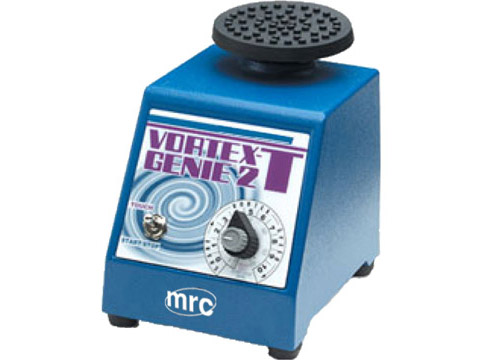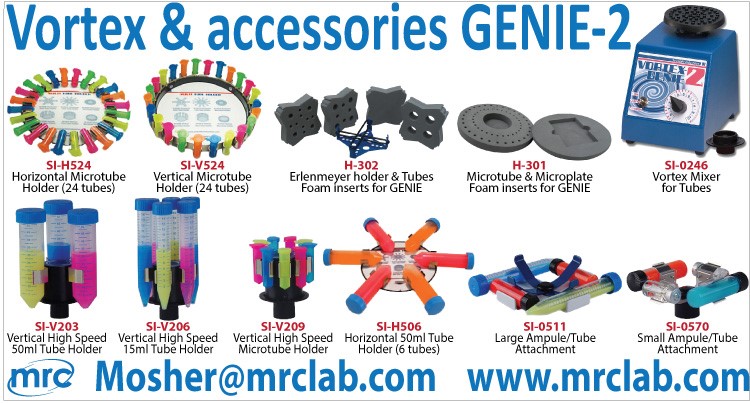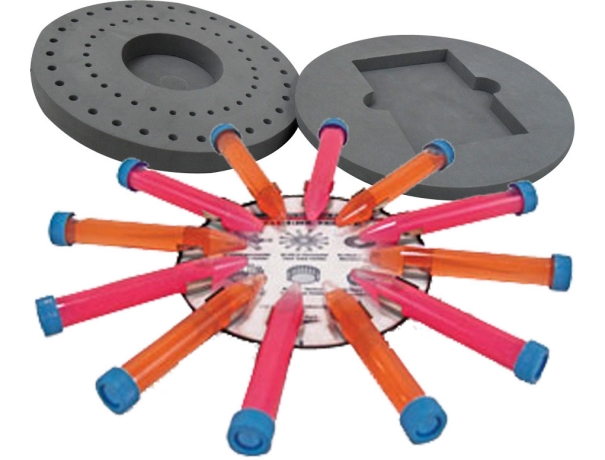In fluid dynamics, a vortex is a region within a fluid where the flow is mostly a spinning motion about an imaginary axis, straight or curved. That motion pattern is called a vertical flow.

A vortex mixer is a simple device used commonly in laboratories to mix small vials of liquid. It consists of an electric motor with the drive shaft oriented vertically and attached to a cupped rubber piece mounted slightly off-center. As the motor runs the rubber piece oscillates rapidly in a circular motion. When a test tube or other appropriate container is pressed into the rubber cup the motion is transmitted to the liquid inside and a vortex is created. Most vortex mixers have variable speed settings and can be set to run continuously, or to run only when downward pressure is applied to the rubber piece.In any laboratory where liquids are mixed in test tubes you can see Vortex, the Vortex replaces the test tube shaking by hand and saves time and effort from the lab staff,
It vibrates aggressively and mixes the liquid well up and down, to a vortex head with a hole suitable for insertion of a test tube from a volume of 10 ml to 100 ml.
Vortex Mixers are important in various scientific disciplines, from biology and chemistry to clinical research. Their ability to homogenize samples and resuspend sediments makes them indispensable for researchers aiming for precision in their experiments.
Applications:
Vortex mixers are quite commonplace in bio-science laboratories. In cell culture and microbiology laboratories they may be used to suspend cells. In a biochemical laboratory they may be used to mix the reagents of an assay or to mix an experimental sample and a dilutant.
Homogenization of Samples
Vortex Mixers excel in homogenizing diverse sample types, from liquids with varying viscosities to suspended solids. This capability is crucial for ensuring uniformity in experimental conditions.
Re-suspension of Sediments
In laboratories dealing with particulate matter, Vortex Mixers prove invaluable for re-suspending sediments in liquid solutions, providing a homogeneous sample for analysis.
The Vortex mixer can be used in:
Suspension of cells in a microbiology laboratory or cell culture.
Mixing test reagents in an analytical or biochemical laboratory

There are a number of key benefits:
-The various speed settings ensure that the intended speed is maintained throughout the process. Vortex mixers can hold from one bottle to a dozen bottles
-In addition, it requires very little space, strength and skill to operate. However, its main advantage is that it ensures a reliable and efficient method of mixing samples.

Advantages of a Vortex mixer
-Capable of mixing small vials of liquid
-The device is quite as simple.
-It has many speed options for different purpose.
-Utilizes a minimal amount of space and power to function.
-Highly efficient and complete mixing at a relatively high speed.
A. Time Efficiency
Vortex Mixers significantly reduce the time required for sample preparation compared to manual methods. This time efficiency is particularly critical in time-sensitive experiments.
B. User-Friendly Design
Designed with the end-user in mind, Vortex Mixers often feature intuitive controls, making them accessible to researchers with varying levels of expertise.
C. Maintenance and Cleaning
The simplicity of Vortex Mixers extends to maintenance and cleaning, minimizing downtime and ensuring continuous functionality.
There are A wide range of Vortex Accessories by MRC
